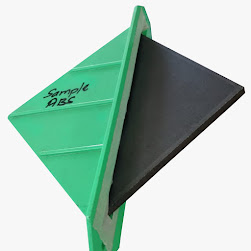Why Rebar Cold Forging Machines Are a Contractor’s Secret Weapon
In the fast-paced world of construction, efficiency, durability, and cost-effectiveness are non-negotiable. Enter the rebar cold forging machine—a game-changing tool that’s quietly revolutionizing how contractors handle reinforced steel. Here’s why this unassuming piece of equipment is a contractor’s ultimate ally.
1. Unmatched Strength and Precision in Rebar Joints
Rebar cold forging machines specialize in creating bulged ends on TMT bars, preparing them for threading and coupling. Unlike traditional welding or lap splicing, cold forging preserves the structural integrity of the steel by aligning the grain flow and eliminating heat-induced weaknesses. This results in joints that are 30–50% stronger than conventional methods, ensuring compliance with high-tension requirements in skyscrapers, bridges, and seismic zones 15.
Key features driving this strength include:
Hydraulic systems with capacities up to 220 tons, ensuring uniform pressure distribution
EN 31/D2-grade dies and punches, which withstand wear and maintain precision even under heavy use
Polyhedron valves and Yuken hydraulic systems, optimizing performance for rebar sizes up to 40 mm
2. Speed That Beats Project Deadlines
Time is money, and cold forging machines deliver both. With the ability to process 70 rods per hour (for 32–40 mm bars), contractors can splice rebar at lightning speed. This is critical for large-scale projects like highways or high-rises, where delays cascade into budget overruns
Why contractors love the efficiency:
Semi-automatic operation: Reduces manual labor and human error.
Quick mold changes: Switch between rebar diameters (12–40 mm) in minutes
Portability: Mounted on trucks or trailers, these machines can be deployed across multiple sites in a single day
3. Cost Savings That Add Up
While the upfront cost of a rebar cold forging machine (₹1.8–₹2.9 lakh) might seem steep, the long-term savings are undeniable:
Reduced material waste: Cold forging uses 100% of the rebar, unlike welding, which burns through rods
Lower labor costs: One operator can handle what previously required a team.
Minimal maintenance: With no heat involved, components like dies and hydraulic pumps last longer
For example, a single machine can replace 10–15 workers manually threading rebars, slashing labor expenses by 60–70%
4. Versatility Across Applications
From high-rises to industrial plants, these machines adapt to diverse needs:
Construction sites: Forge rebar ends for mechanical couplers, ensuring seismic-resistant connections
Roadwork: Stabilize infrastructure by reinforcing concrete slabs and pillars.
Automotive and mining: Create custom components like axle shafts or drill rods
Manufacturers like Surya Engineering and Vruddhi Couplers even offer customizable dies for niche projects, making the machines indispensable for specialized contractors
5. Sustainability Meets Compliance
With stricter environmental regulations, cold forging stands out as an eco-friendly alternative:
Zero emissions: No heat or fumes, unlike welding
Recyclability: Forged rebar joints are fully reusable, aligning with circular economy goals
Rebar cold forging machines are no longer a luxury—they’re a necessity for contractors aiming to stay competitive. By merging strength, speed, and savings, these tools ensure projects are completed on time, within budget, and to the highest safety standards. As one Mumbai-based contractor put it, “Once you go cold forging, you never look back.”
.png)


















